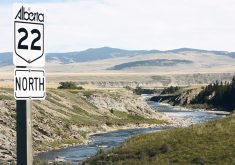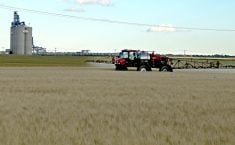Rural-urban divide now a concern as premier chooses a cabinet that could include only one MLA from Regina, Saskatoon
REGINA — The rural-urban split following Saskatchewan’s Oct. 28 election has dominated post-election discussion and overshadowed the Saskatchewan Party’s fifth consecutive majority win.
The official count will be held Nov. 9, but after two preliminary counts, Elections Saskatchewan said the Sask. Party is elected or leading in 34 seats, all of them rural and small cities except for one in Saskatoon, and the NDP in 27 seats, all of them urban and northern. Five cabinet ministers were defeated.
Voter turnout was 55.37 per cent, up from 52.86 per cent in 2020.
Read Also

New coal mine proposal met with old concerns
A smaller version of the previously rejected Grassy Mountain coal mine project in Crowsnest Pass is back on the table, and the Livingstone Landowners Group continues to voice concerns about the environmental risks.
Of those, 52.5 per cent voted for the Sask. Party and 40.2 per cent for the NDP. That compares to 60.67 per cent and 31.59 per cent, respectively, in 2020. The Sask. United Party earned 3.9 per cent.
In his election night speech to supporters, premier Scott Moe said he had heard the message and would do better. He discounted the rural-urban divide.
“I would disagree with that because I know regardless of who you voted for in this election, you did so because you wanted what was best for the province that we know, love and live in, and in this I would say each of us is united,” he said.
He congratulated NDP leader Carla Beck on her strong campaign.
During a post-election panel at the University of Regina, political scientist Tom McIntosh said most expected a reduced Sask. Party majority and larger NDP opposition. However, he said it was surprising the NDP didn’t make inroads in Moose Jaw and Prince Albert.
The resulting rural-urban seat split was the big fear heading into the election. McIntosh said Calgary pollster Janet Brown offered good advice when she reminded everyone the colours on an electoral map represent the winner only.
“So it gets coloured green or it gets coloured orange. Underneath that colour, that stamp of that’s who represents us, there’s a lot of variation,” he said.
“The NDP vote went up in most rural areas … there’s still significant Sask. Party support in Regina, in Saskatoon.”
McIntosh, who focuses on health policy, said the public now has high expectations, particularly around health care.
“Rural health care is a mess. Urban health care is a mess. They are a mess for different reasons,” he said.
“There hasn’t been more money in the health care system ever. It’s not how much we spend, it’s how we’re spending it.”
Panelists noted the races were close in many ridings, especially in the cities.
Former Sask. Party MLA Dustin Duncan said the losses are not insurmountable.
“The urban-rural divide is actually, if I look at the numbers, less for us than really it is for the NDP,” he said, because the gap between the Sask. Party and NDP candidates was thousands of votes in some cases.
Re-elected Regina Douglas Park NDP MLA Nicole Saurer said the party grew its support in nearly every constituency, and that’s a positive result for the work they had done.
She said having a larger caucus now will allow MLAs to get out to rural areas and do the work to build back the support the party once had. There is clearly common ground among all voters in the areas of health care, education, public safety and cost of living.
“I think what you’ll see moving forward … is us continuing to talk about those things but being more present in locations where, frankly, people hadn’t seen an NDP MLA for 15 years and sort of perceive us as these hippie, urban boogeymen, which we aren’t,” she said.
First Nations University of Canada professor and journalist Merelda Fiddler-Potter said the rural-urban divide is in some ways conjured up. She said many urban residents are still connected to the land in some way.
“We treat the rural areas and the urban areas as if there’s only one possible way they can vote, and there’s not,” she said.
“So the way that we talk to rural Saskatchewan has to change because … in general, we treat them as outsiders and that’s not what they are at all.”
Duncan said Saskatchewan is small.
“There’s just not that many kind of wedge issues anymore,” he said.
“I don’t think we’re as divided as a province as people maybe think.”
Moe will choose a rural cabinet, however, after the vote count is official.
The last government to win five majorities in a row in Saskatchewan was Tommy Douglas’s CCF from 1944 to 1961.


















